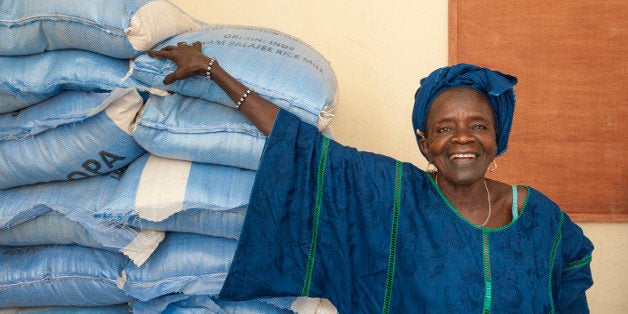
Goal 2 of The Sustainable Development Goals (SDGs) calls for ending hunger, achieving food security, improving nutrition and promoting sustainable agriculture--by 2030. These are lofty goals to achieve in less than 15 years, but we know global hunger is a solvable problem, so how can we get there?
The "how" starts and ends with the people in the communities themselves: putting the decision-making power into the hands of local groups is fundamental to achieving the end of hunger and the achievement of all of the SDGs, which are interconnected.
We need to move away from top-down approaches that foster dependency, and instead focus on bottom-up solutions that partner with communities who, with the right tools and training, lead the charge of their own development in all key sectors--water, sanitation, health, education and gender equality. To be effective and sustainable, approaches must combine action in all of these areas to address the underlying causes of hunger.
This integrated and community-led approach results in communities moving from powerlessness and resignation, to buy-in and ownership, committed to ending their own--and their communities'--hunger and poverty. When communities are themselves the problem solvers, they lead the change that results in sustainable development. This type of development--community-led-- is critical to ending hunger by 2030.
And, we know this type of development works. In countries where we work across Africa, for example, several communities have graduated to "self-reliance," meaning that these communities have affirmed multiple local partnerships, created funding streams from revenue-generating activities and established gender-balanced leadership structures to support sustainable growth. The Hunger Project has activated its exit strategy, and these self-reliant communities, now equipped with the tools, training and local government partnerships needed, have set their own stage to flourish. By stimulating this type of development, we can foster a culture of self-determination and economic viability in which the community itself is the driver of change.
Community-led development is working in other places, too. A diverse set of countries--from South Korea to Brazil--have successfully implemented nationwide programs to strengthen local government and civil society to meet basic needs and reduce poverty and hunger.
Ending hunger is a hard, complex process, which requires multi-sector partnerships and investment. But we're on our way, and we can fully get there if we support local communities in leading the way.
Follow Åsa Skogström Feldt on Twitter
Learn more about The Hunger Project.
This post is part of a series produced by The Huffington Post to mark the occasion of the one-year anniversary of the adoption of the Sustainable Development Goals (SDGs, or, officially, "Transforming Our World: the 2030 Agenda for Sustainable Development"). The SDGs represent an historic agreement -- a wide-ranging roadmap to sustainability covering 17 goals and 169 targets -- but stakeholders must also be held accountable for their commitments. To see all the posts in the series, visit here.